Ten things to expect when you move to Tuscany
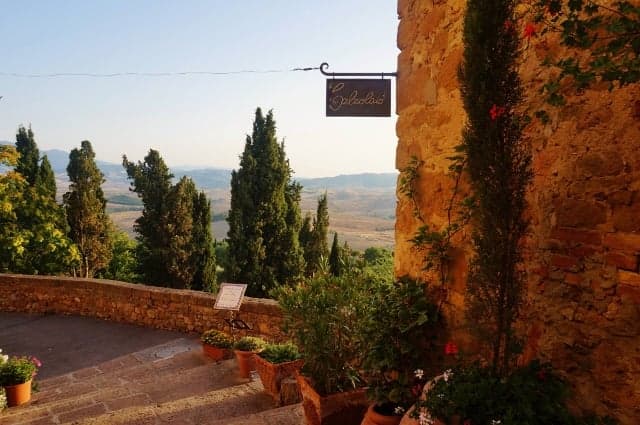
Life in this famously beautiful region really is just like the movies - sometimes.
With its rolling hills, pretty hilltop villages, incredible history, and famous cuisine, no wonder Tuscany is a place so many people dream of moving to – and do move to.
Call it the Under the Tuscan Sun effect, or just the allure of the region, but statistics show that people from English-speaking countries are particularly drawn to Tuscany.
The region is the third most popular for Anglophone expats to move to after Lazio or Lombardy. Around 6,700 people from the UK, US, Ireland, Canada, Australia and South Africa currently live in Tuscany, more than half of them from the UK alone.
Meanwhile, Americans flock to Florence: US citizens total more than 1,100 there, making it one of the few places in Italy where Americans outnumber Brits.
But as they find out, living in Tuscany is very different from visiting. While some people find their Tuscan dreams coming true, others struggle with the move when it doesn’t turn out as expected.
.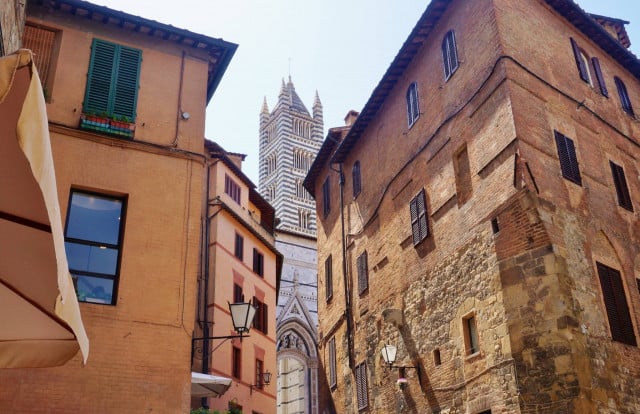
Siena, Tuscany. Photo: Clare Speak/The Local
Like anywhere else, even Tuscany has its drawbacks. While focusing too much on the negatives won’t help, just knowing what to expect in reality can stop culture shock from hitting too hard.
I lived in Tuscany for two years before moving south. I felt very lucky to be there. But my life was not exactly like most people imagined it to be.
And I have to admit that I didn’t know what I was getting into at first. Before moving (unexpectedly and at fairly short notice, because of my husband’s job) to Arezzo, in eastern Tuscany. I’d only ever spent a few weeks in the region before.
Obviously everyone’s experiences will be different. But here’s a look at what you might expect from life in this region, beyond the preconceptions so many of us have when we first arrive.
Property is usually expensive
… but not always.
Tuscany is known for being an expensive region to buy a house, because of its enormous popularity among international buyers.
That doesn’t mean there are no affordable properties on the market at all. But you might have to scale down, look in a small village or remote area, or get ready to do some serious renovation work, depending on your budget.
Tuscany s a big place, and prices vary from one region and town to another.
Areas around Florence and Siena are among the most expensive, while eastern Tuscany, for example, is cheaper - with the exception of some towns like Cortona, where many estate agents target foreign buyers and prices are usually (but not always) higher than you might see on the domestic market.
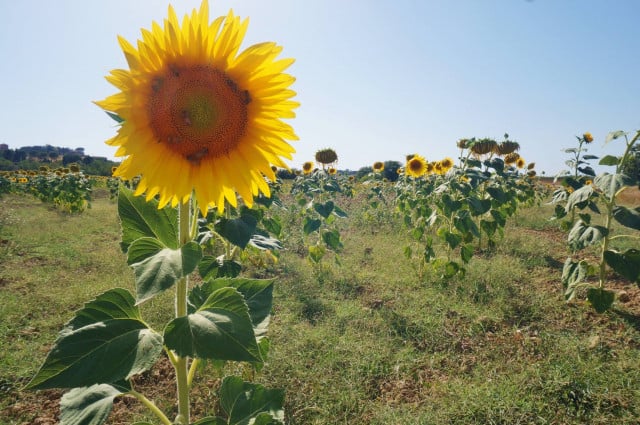
Life in Tuscany isn't all sunshine and fields of sunflowers. Photo: Clare Speak/The Local
It also depends on the type of property you want. The Italian property market is full of old, unloved houses going for a song, and Tuscany is no exception. While estate agents point out that a larger proportion of old homes in Tuscany have already been renovated, often by foreign buyers, there are still many potential renovation projects to discover.
Wherever you look, be aware that stated asking prices are often inflated and you can probably bargain a little harder than you think.
It’s easy to escape the tourist crowds
If you’ve visited Tuscany on holiday you’ll know how gorgeous places like Florence, Pisa and Siena are in summer. But you’re not the only one who thinks so. The crowds get unbearable in peak season and areas around the popular sights can feel a lot like Disneyland.
But living here isn't like that at all - unless, for some reason, you want it to be.
If you want to live somewhere cheaper and quieter, and where pineapple pizza is not taken seriously as a menu item, you don’t have to go far.
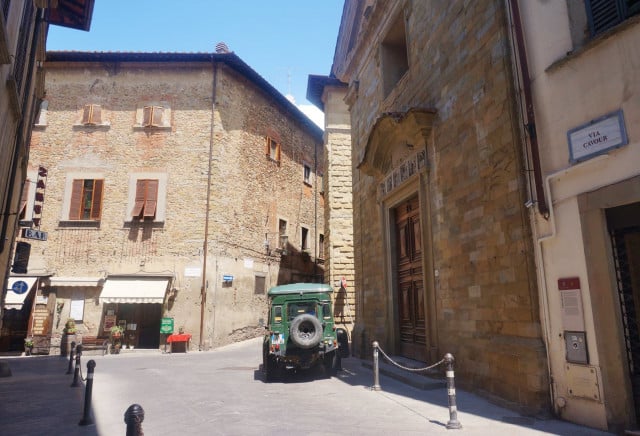
Silence in the streets of Arezzo in August. Photo: Clare Speak/The Local
There are countless other Tuscan towns and villages untouched by mass tourism, and lots of those country houses in need of renovation are in quiet, remote locations.
Even Arezzo is nearly tourist-free. The streets in August are eerily quiet here, as the mostly Italian residents are all on their long summer holidays.
However, before you buy that villa in the middle of nowhere, it’s worth remembering that culture shock and isolation send plenty of would-be expats packing. Are you sure you want to be the only foreigner in the village?
Not every part of Tuscany is idyllic
The first time I saw factories belching out smoke in the middle of the gorgeous Tuscan countryside I was appalled. What, here?
But like everywhere else in the world, things like pollution, traffic and noise are a problem in parts of Italy.
In Florence, the traffic is famously heavy, parking nearly impossible and accommodation expensive. Parking is a nightmare almost everywhere in Tuscany, and in Italian towns and cities generally. Many of those quaint old town centres sit under a haze of exhaust fumes as drivers circle around looking for a space.
If you’ve only been to Tuscany on holiday before it can be surprise to find that a lot of people live in concrete apartment blocks, work in factories and shop at the supermarket, just like back home (albeit with nicer weather).
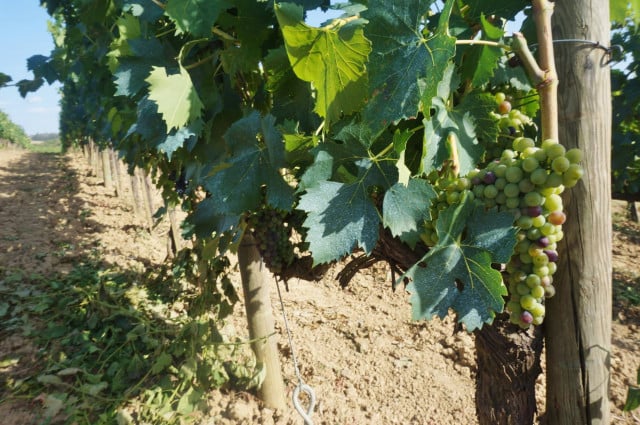
Photo: Clare Speak/The Local
There’s no better place to learn Italian
Central Tuscany is famously the birthplace of what's now known as the Italian language, after Dante Alighieri first formalized the local tongue in his writing. And today Tuscany, especially Florence, is a popular place to study Italian on intensive courses or as part of university studies.
The Italian you’ll learn in the classroom however will be quite different to what you’ll hear on the streets, so expect a crash course in both Italian and Fiorentino - or the local dialect of whichever town you’re in!
People are fiercely proud
Speaking of local accents and dialects, the vast majority of people here are extremely proud of them. I haven’t met many people from Tuscany who aren't dying to tell you exactly which neighbourhood of which town they were born in, and almost definitely still live in.
Big towns in particular, like Florence, Siena or Arezzo, have strong identities, forged over centuries of warring with their neighbours and still proudly displayed today.
READ ALSO:
But the warlike behaviour didn’t end there. Each town has deep-seated and bitter rivalries between different quartieri (neighbourhoods) and these were the basis for events like Siena’s palio horse race, or Arezzo’s giostra del saracino jousting competition, in which the town’s quartieri compete.
And these are no genteel reenactments put on for the tourists – I’ve seen more rage and violence between rival supporters at the giostra than at English football matches.
There’s a saying that people are loyal to their campanile (belltower) – or the tiny hamlet where they grew up. So if you feel the same love for the place you’ve chosen to call home, you’ll fit right in.
It can be hard to make friends
Local ones, anyway. Some people tell me they were warmly welcomed by their neighbours, others said they still don't feel accepted after several decades, or ended up making more friends within an expat community.
In my case, it hasn't been easy. Even with passable language skills and an Italian husband (from a different region), integrating was harder than I expected. There weren't a huge number of foreign nationals in my town and local people are apparently well known for moving in closed circles. As someone who has lived in large, international cities for many years, this differing mentality was the hardest thing to get used to.
People are also noticeably more reserved here than in Rome or southern Italy. That's not to say people will be unfriendly, but to fit in and make true friends here you'll need to make more than a little bit of effort.
The food might not be what you think
Tuscan cuisine is famously excellent. We read about it all the time in glossy food and travel magazines. Or do we? I'm not sure what I was expecting exactly, but I didn't know it was going to be quite this, well, rustic.
I'd order what I thought was a salad, and get a plate of unpeeled fridge-cold vegetables still caked in dirt. I questioned my Italian comprehension when waiters rattled off long lists of unappetising specials: fried brains, liver, tripe, cow's stomach. Plates of lukewarm beans on the side.
And don't even get me started on the unsalted bread.
This is the famous Tuscan cuisine? I thought semi-regularly. At the risk of provoking fury, I'll admit I wasn't impressed.
I eventually got used to it. Now I love pappardelle al cinghiale (thick pasta ribbons in wild boar ragu) with a glass of the same strong Chianti that I once described as rocket fuel. But I'll pass on the lampredotto (the fourth and final stomach of a cow) for now, thanks.
READ ALSO:
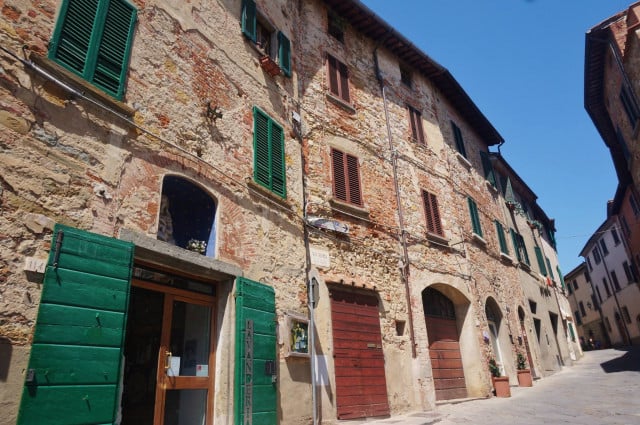
Photo: Clare Speak/The Local
There will be no shortage of wine
No ifs, no buts. Living in Tuscany is a dream come true for wine lovers. Whether you’re a fan of the strong “super Tuscans” or prefer a Brunello di Montalcino or Cortona Syrah, you could easily spend a lifetime at wine tastings and vineyards here without getting bored. And making your own wine is always a possibility, if you’re up for the challenge!
It gets very hot – and very cold
If you come to Tuscany in summer, it’s not unusual for the temperature to hit 40 degrees. Or more. So maybe it’s not surprising that many people imagine it’s warm and sunny here all year round.
But as anyone who lives here will tell you, that’s not the case. Winter is cold here, and from October to March you can expect plenty of fog, rain, wind, and occasionally, snow. Suddenly, living in an old stone house in the Tuscan countryside isn’t quite as pleasant.
Expect the unexpected
It's difficult to tell anyone what they can expect from life in Tuscany. Living in any part of Italy can seem random and chaotic at times, and for me Tuscany is always full of surprises.
From old Tuscan men speeding down the street on tiny bicycles to unexpected street parades blocking the traffic, or families of wild boar roaming around in the car park, you never know what you're going to see next around here.
One thing living here has definitely taught me is how to relax and go with the flow - because there’s really no other way.
.jpg)
Photo: Clare Speak/The Local
Comments (3)
See Also
With its rolling hills, pretty hilltop villages, incredible history, and famous cuisine, no wonder Tuscany is a place so many people dream of moving to – and do move to.
Call it the Under the Tuscan Sun effect, or just the allure of the region, but statistics show that people from English-speaking countries are particularly drawn to Tuscany.
The region is the third most popular for Anglophone expats to move to after Lazio or Lombardy. Around 6,700 people from the UK, US, Ireland, Canada, Australia and South Africa currently live in Tuscany, more than half of them from the UK alone.
Meanwhile, Americans flock to Florence: US citizens total more than 1,100 there, making it one of the few places in Italy where Americans outnumber Brits.
But as they find out, living in Tuscany is very different from visiting. While some people find their Tuscan dreams coming true, others struggle with the move when it doesn’t turn out as expected.
.
Siena, Tuscany. Photo: Clare Speak/The Local
Like anywhere else, even Tuscany has its drawbacks. While focusing too much on the negatives won’t help, just knowing what to expect in reality can stop culture shock from hitting too hard.
I lived in Tuscany for two years before moving south. I felt very lucky to be there. But my life was not exactly like most people imagined it to be.
And I have to admit that I didn’t know what I was getting into at first. Before moving (unexpectedly and at fairly short notice, because of my husband’s job) to Arezzo, in eastern Tuscany. I’d only ever spent a few weeks in the region before.
Obviously everyone’s experiences will be different. But here’s a look at what you might expect from life in this region, beyond the preconceptions so many of us have when we first arrive.
Property is usually expensive
… but not always.
Tuscany is known for being an expensive region to buy a house, because of its enormous popularity among international buyers.
That doesn’t mean there are no affordable properties on the market at all. But you might have to scale down, look in a small village or remote area, or get ready to do some serious renovation work, depending on your budget.
Tuscany s a big place, and prices vary from one region and town to another.
Areas around Florence and Siena are among the most expensive, while eastern Tuscany, for example, is cheaper - with the exception of some towns like Cortona, where many estate agents target foreign buyers and prices are usually (but not always) higher than you might see on the domestic market.

Life in Tuscany isn't all sunshine and fields of sunflowers. Photo: Clare Speak/The Local
It also depends on the type of property you want. The Italian property market is full of old, unloved houses going for a song, and Tuscany is no exception. While estate agents point out that a larger proportion of old homes in Tuscany have already been renovated, often by foreign buyers, there are still many potential renovation projects to discover.
Wherever you look, be aware that stated asking prices are often inflated and you can probably bargain a little harder than you think.
It’s easy to escape the tourist crowds
If you’ve visited Tuscany on holiday you’ll know how gorgeous places like Florence, Pisa and Siena are in summer. But you’re not the only one who thinks so. The crowds get unbearable in peak season and areas around the popular sights can feel a lot like Disneyland.
But living here isn't like that at all - unless, for some reason, you want it to be.
If you want to live somewhere cheaper and quieter, and where pineapple pizza is not taken seriously as a menu item, you don’t have to go far.

Silence in the streets of Arezzo in August. Photo: Clare Speak/The Local
There are countless other Tuscan towns and villages untouched by mass tourism, and lots of those country houses in need of renovation are in quiet, remote locations.
Even Arezzo is nearly tourist-free. The streets in August are eerily quiet here, as the mostly Italian residents are all on their long summer holidays.
However, before you buy that villa in the middle of nowhere, it’s worth remembering that culture shock and isolation send plenty of would-be expats packing. Are you sure you want to be the only foreigner in the village?
Not every part of Tuscany is idyllic
The first time I saw factories belching out smoke in the middle of the gorgeous Tuscan countryside I was appalled. What, here?
But like everywhere else in the world, things like pollution, traffic and noise are a problem in parts of Italy.
In Florence, the traffic is famously heavy, parking nearly impossible and accommodation expensive. Parking is a nightmare almost everywhere in Tuscany, and in Italian towns and cities generally. Many of those quaint old town centres sit under a haze of exhaust fumes as drivers circle around looking for a space.
If you’ve only been to Tuscany on holiday before it can be surprise to find that a lot of people live in concrete apartment blocks, work in factories and shop at the supermarket, just like back home (albeit with nicer weather).

Photo: Clare Speak/The Local
There’s no better place to learn Italian
Central Tuscany is famously the birthplace of what's now known as the Italian language, after Dante Alighieri first formalized the local tongue in his writing. And today Tuscany, especially Florence, is a popular place to study Italian on intensive courses or as part of university studies.
The Italian you’ll learn in the classroom however will be quite different to what you’ll hear on the streets, so expect a crash course in both Italian and Fiorentino - or the local dialect of whichever town you’re in!
People are fiercely proud
Speaking of local accents and dialects, the vast majority of people here are extremely proud of them. I haven’t met many people from Tuscany who aren't dying to tell you exactly which neighbourhood of which town they were born in, and almost definitely still live in.
Big towns in particular, like Florence, Siena or Arezzo, have strong identities, forged over centuries of warring with their neighbours and still proudly displayed today.
READ ALSO:
But the warlike behaviour didn’t end there. Each town has deep-seated and bitter rivalries between different quartieri (neighbourhoods) and these were the basis for events like Siena’s palio horse race, or Arezzo’s giostra del saracino jousting competition, in which the town’s quartieri compete.
And these are no genteel reenactments put on for the tourists – I’ve seen more rage and violence between rival supporters at the giostra than at English football matches.
There’s a saying that people are loyal to their campanile (belltower) – or the tiny hamlet where they grew up. So if you feel the same love for the place you’ve chosen to call home, you’ll fit right in.
It can be hard to make friends
Local ones, anyway. Some people tell me they were warmly welcomed by their neighbours, others said they still don't feel accepted after several decades, or ended up making more friends within an expat community.
In my case, it hasn't been easy. Even with passable language skills and an Italian husband (from a different region), integrating was harder than I expected. There weren't a huge number of foreign nationals in my town and local people are apparently well known for moving in closed circles. As someone who has lived in large, international cities for many years, this differing mentality was the hardest thing to get used to.
People are also noticeably more reserved here than in Rome or southern Italy. That's not to say people will be unfriendly, but to fit in and make true friends here you'll need to make more than a little bit of effort.
The food might not be what you think
Tuscan cuisine is famously excellent. We read about it all the time in glossy food and travel magazines. Or do we? I'm not sure what I was expecting exactly, but I didn't know it was going to be quite this, well, rustic.
I'd order what I thought was a salad, and get a plate of unpeeled fridge-cold vegetables still caked in dirt. I questioned my Italian comprehension when waiters rattled off long lists of unappetising specials: fried brains, liver, tripe, cow's stomach. Plates of lukewarm beans on the side.
And don't even get me started on the unsalted bread.
This is the famous Tuscan cuisine? I thought semi-regularly. At the risk of provoking fury, I'll admit I wasn't impressed.
I eventually got used to it. Now I love pappardelle al cinghiale (thick pasta ribbons in wild boar ragu) with a glass of the same strong Chianti that I once described as rocket fuel. But I'll pass on the lampredotto (the fourth and final stomach of a cow) for now, thanks.
READ ALSO:

Photo: Clare Speak/The Local
There will be no shortage of wine
No ifs, no buts. Living in Tuscany is a dream come true for wine lovers. Whether you’re a fan of the strong “super Tuscans” or prefer a Brunello di Montalcino or Cortona Syrah, you could easily spend a lifetime at wine tastings and vineyards here without getting bored. And making your own wine is always a possibility, if you’re up for the challenge!
It gets very hot – and very cold
If you come to Tuscany in summer, it’s not unusual for the temperature to hit 40 degrees. Or more. So maybe it’s not surprising that many people imagine it’s warm and sunny here all year round.
But as anyone who lives here will tell you, that’s not the case. Winter is cold here, and from October to March you can expect plenty of fog, rain, wind, and occasionally, snow. Suddenly, living in an old stone house in the Tuscan countryside isn’t quite as pleasant.
Expect the unexpected
It's difficult to tell anyone what they can expect from life in Tuscany. Living in any part of Italy can seem random and chaotic at times, and for me Tuscany is always full of surprises.
From old Tuscan men speeding down the street on tiny bicycles to unexpected street parades blocking the traffic, or families of wild boar roaming around in the car park, you never know what you're going to see next around here.
One thing living here has definitely taught me is how to relax and go with the flow - because there’s really no other way.
.jpg)
Photo: Clare Speak/The Local
Join the conversation in our comments section below. Share your own views and experience and if you have a question or suggestion for our journalists then email us at [email protected].
Please keep comments civil, constructive and on topic – and make sure to read our terms of use before getting involved.
Please log in here to leave a comment.